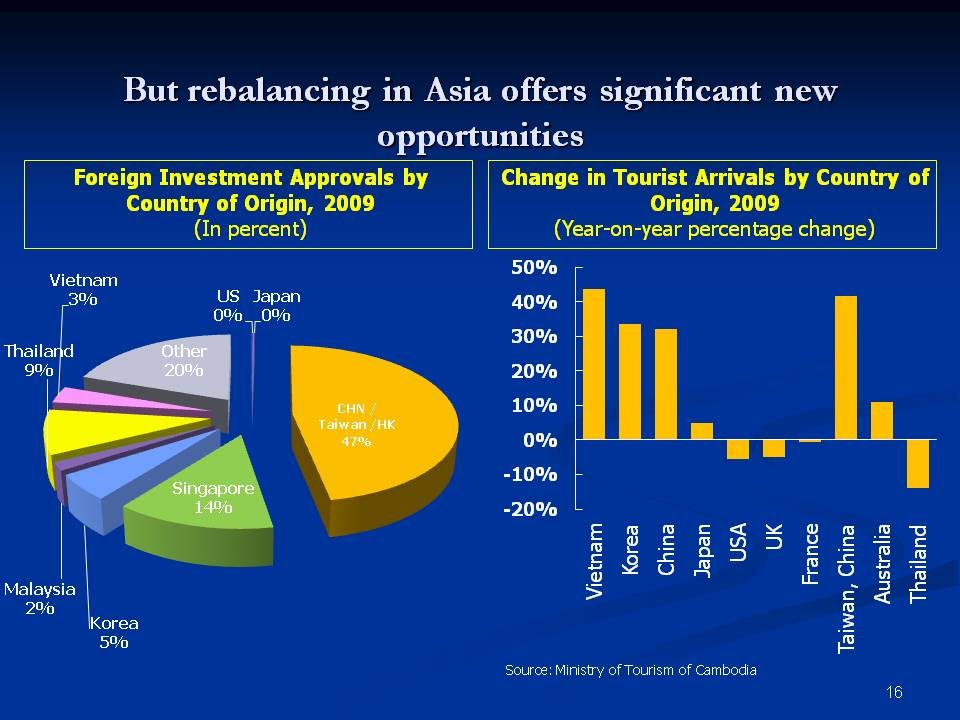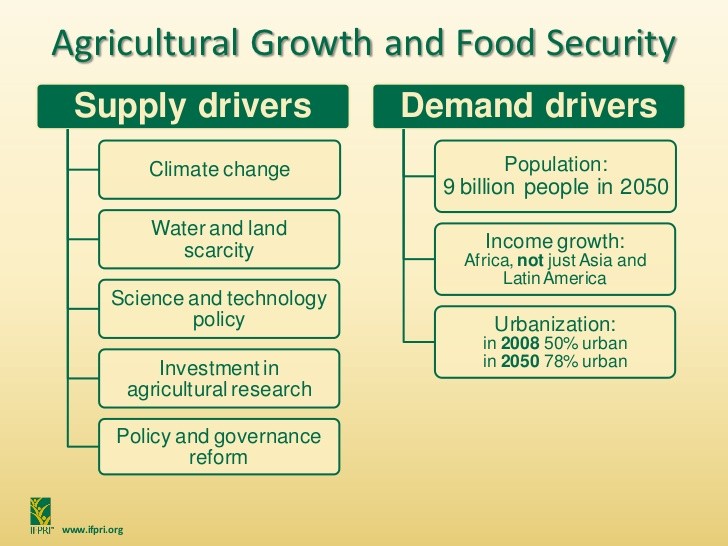Rapid growth of selected Asian economie and implications for agriculture and food
Post on: 16 Март, 2015 No Comment

China’s rapid economic growth and Its implications for agriculture and food security in China and the rest of the world(continue)
3. Prospects for China’s economic growth in the future
Projection of economic growth in the long term is intricate as there is no useful model to conduct this kind of analysis. There is little information on future structural changes that may respond to economic growth and development policies. In this study, instead of using model-based scenarios for China’s GDP growth, we adopt a more qualitative approach that takes into consideration the likely trends of the major driving forces of economic growth.
3.1 National development plan
In the Eleventh Five-Year Plan, 20062010 and the strategies for long-term economic development, China has set ambitious goals to metamorphose the nation into a well-off society (Xaiokun Shehui) in the next 20 years: double GDP in ten years; smooth transformation of the economy from transition to development and from agriculture to industry and services; sustainable management of the environment; and other social and political targets.
In order to achieve these goals, China’s leaders have been pursuing a more sustainable development plan, the so-called Five Balanced (or integrated) Developments (FBD); i.e. developments between rural and urban areas, across regions; between economic and social aspects; between human activities, natural resources and environmental conservation; and between internal (domestic) and external economies. This FBD plan is backed by policies to stimulate the development of new technologies, education and urbanization, to make optimum progress in controlling deterioration of ecosystems and to move the nation to a more market-oriented and open economy.
3.2 Driving force prospective for economic growth
There is considerable potential for China’s economic growth despite some development risks. Rapid growth is likely to continue in the coming decade though growth rates might decline gradually over time. New national leaders, who are strong reformists, took their positions in the government in early 2003. Several initiatives have been undertaken to boost China’s economy. These include policies related to the strong implementation of macroeconomic stabilization, deepening market reforms, further liberalizing of the economy and emphasizing sustainable growth through increasing investment in R&D, education, health and infrastructure and resource and environmental protection. The following factors are generally considered to be the key driving forces underpinning China’s economic growth in the future:
Macroeconomic stabilization. Macroeconomic stabilization is likely to be further strengthened. The national leaders consider that macroeconomic stability is one of the pre-conditions to generate long-term economic growth as it will provide a favourable environment for both domestic and foreign investment. A stabilized macroeconomic environment will also help the government to better foster development of the infrastructure and institutions necessary for sustainable growth. The stability system was well tested when China was seriously affected by the SARS epidemic and yet the economy recorded 9.5 percent growth in 2003.
Physical capital. A high domestic savings rate is likely to remain in the coming decade. Capital formulation was about 35 percent of the GDP in the 1980s and has increased enormously overtime, from nearly 40 percent in the 1990s to 44.2 percent in 2003 and 2004 (NSBC 2005). The Development Research Center of State Council (DRC) projects that the current rate of investment in the coming ten years will be maintained (DRC 2002). These high investment rates indeed have also been experienced for a sustained time period in several Eastern Asian countries or regions such as Japan, Republic of Korea and Taiwan Province of China. High domestic savings rates, stable macroeconomic environment, increasing inflows of FDI and large markets are fundamental bases for high level investment in China’s current as well as future economy.
Labour force. Cheaper rural surplus labour has facilitated China’s economic growth and structural changes. There is still an abundant and enormous pool of rural labourers who are seeking non-farm employment. This continued shift of labour from the agricultural to non-agricultural sectors will further accelerate the growth of labour-intensive industries and service sectors in the coming decade, and will continue to provide cheap industrial products to consumers in both China and the rest of the world. Export of labour-intensive products will expand under more liberalized world trade (Ianchovichina et al. 2004).
R&D spending. According to the recent Eleventh Five-Year Plan, 20062010 and the Long Term Development Plan (20062020), the Boosting China’s Development through Science and Education programme (Ke Jiao Xing Guo) will be further strengthened. The government investment in R&D is planned to grow more than the average growth of government fiscal revenue (State Council 2002). The growth in public investment in professional education (i.e. colleges and universities) has also increased substantially since the late 1990s (NSBC various issues). We expect that the total factor productivity increase contributed by technology changes in the future will exceed that in the past.
Human capital. In additional to the Ke Jiao Xing Guo development programme, the national leaders decreed a new development plan, Yi Ren Wei Ben (or people-oriented development) in 2003. The new plan emphasizes overall human development (not only professional education), in particular rural primary education. In order to implement this new development plan, an ambitious programme has been proposed to reduce or eventually eliminate primary school education fees throughout China, including Western China and other less-developed regions. Other programmes aimed to improve primary, secondary and professional education are under consideration.
Market development and role of the government. Emerging markets and evolving institutions in China’s economy also show that China is preparing for sustainable growth in the first half of the twenty-first century. As China enters the twenty-first century, the rural economy is evolving to the point that it is ready to help China make the next step in modernization. Markets for labour, agricultural commodities, many inputs for farmers and rural industrial managers have flourished in recent years and are increasingly competitive and rational (Rozelle et al. 1999 and 2000). The direct provision of goods and services will be handled increasingly by the private sector. Meanwhile, the government is planning to thoroughly reform its administrative system and shift its role to providing public goods, overcoming market failures, and providing services that the private sector will not provide, but which will serve to further the transformation of China in the coming years (State Council 2003).
Urbanization. Urbanization and newly initiated rural small-town development programmes will facilitate China’s economic structural changes, create employment for rural and urban labourers, increase farmers’ income and promote rural and urban demand for industrial commodities and services. The International Institute of Applied Systems Analysis (IIASA) projects that the level of urbanization will fall within a range of 50 to 55 percent in 2020 compared to 36 percent in 2000 (Toth et al. 2003).
Trade liberalization. China’s gains from economic globalization and trade liberalization will further boost its economic growth. Expanding labour-intensive industries, fostered also by new export opportunities, can contribute to China’s development strategy that includes labour absorption into industries outside primary agriculture. Merchandise trade in the future will grow much faster than in the past (Ianchovichina et al. 2004). Moreover, the static impacts (i.e. merchandise trade) are probably only a small part of China’s gains from trade liberalization; the dynamic effects such as capital accumulation and technology spillovers will be more substantial (van Tongeren et al. 2003).
Foreign direct investment. Although the growth rates of FDI inflow may or may not be as high as those recorded in the past two decades, China will remain one of the most attractive countries for FDI in the post-WTO era and at least in the coming decade. China has attracted substantial FDI in past decades. After 2002 China has become the most important recipient of FDI in the world. In the past two decades, FDI has been pouring into the coastal regions. Recently, China’s regional development plan and its increasing investment in infrastructure in less-developed regions have begun to impact the direction of FDI in China. Zhang and Post (2003) show that there is increasing FDI towards the western part of China to exploit its rich resources and stimulate domestic demand. Given the size of the market and the expectation of strong economic growth in the future, China is very likely to remain one of the most favoured investment destinations in the world.
Regional development programmes. Under the FBD strategy growth in less-developed regions is expected to accelerate in the coming decades. In order to pursue overall development of the country, the central government has initiated several regional development programmes, particularly the Great Western Development Plan, Central China Development Program, Northeast China Development Program and new National Poverty Alleviation Program, to redirect resources towards less-developed regions. According to the nation’s development plan, in the first ten years of this century, the major investments under regional development programmes include infrastructure, ecosystem and environmental conservation, and human resource development (Du 2003). We expect that implementation of the regional balanced development strategy will help the less-developed regions to catch up with the national growth path. This will create local employment and demand for commodities from the coastal region, and help China reduce income disparity among regions.
While we expect that high growth will remain in China for the next 20 years, there are other factors and uncertainties that may limit China’s economic growth over time. These include:

There could be potential risks associated with internal macroeconomic stability if China’s income disparity continues to widen;
The growth in labour supply will slow down in association with China’s falling population growth rate and the changing age structure of the population (Toth, et al. 2003), which will lead to an increase in wages after certain years;
The aged population will grow faster, which will lead to a rise in the dependence ratio in coming decades;
As the dependence ratio rises, national savings propensity is likely to decline, which may impact the growth of domestic investment;
After ten to 15 years, China will have basically finished the major tasks of its economic reforms that were initiated in the late 1970s. The gains from further economic reforms will be weak;
With rapid economic growth, there will be considerable stress on environmental degradation if appropriate environmental protection policies are not emphasized; and
There may be political risk and tension in the external environment, which could affect China’s economic and political stability in the future (although this is highly unlikely). In recent years, after China emerged as one of leading importers of natural resources such as timber, fish meal, energy and minerals, some claim that there will be concerns about global food security (if China imports enormous amounts of food from the international market) and the natural resource base, for China’s long-term rapid economic growth.
3.3 Economic growth prospects
Based on the above discussions, this subsection provides our prospects for China’s economic growth in the first two decades of the twenty-first century. While our prospects are focused on the most likely growth scenario (baseline), we also formulate an alternative higher growth scenario (or high growth scenario) because one of the objectives of this study is to examine the local and global implications of China’s rapid economic growth. The details of both the baseline growth scenario and high growth scenario for China from 2006 to 2020 are summarized in Table 8. For comparison, we also present the corresponding figures in the past 20 years (19852005).
Table 8. Projection of China’s economy, 20012020














